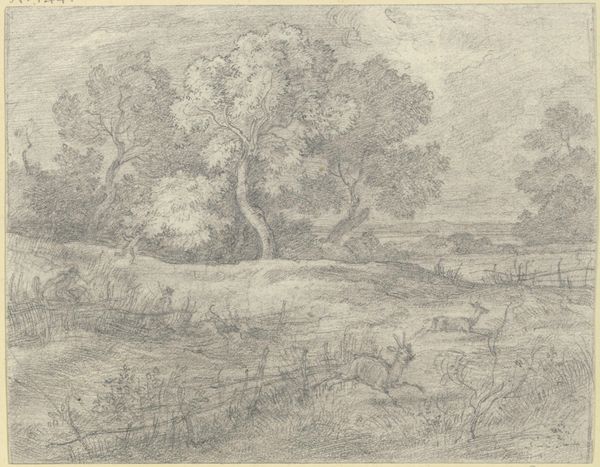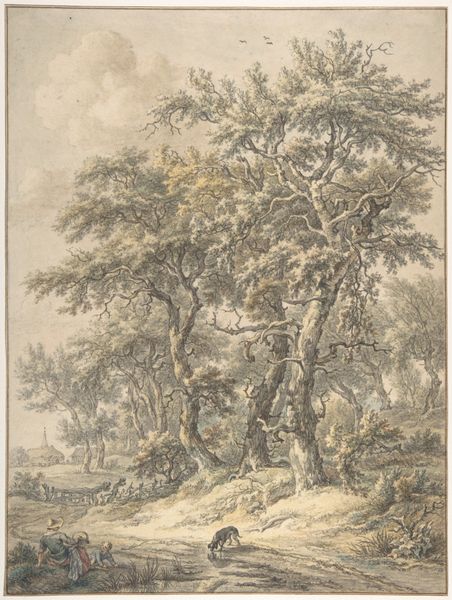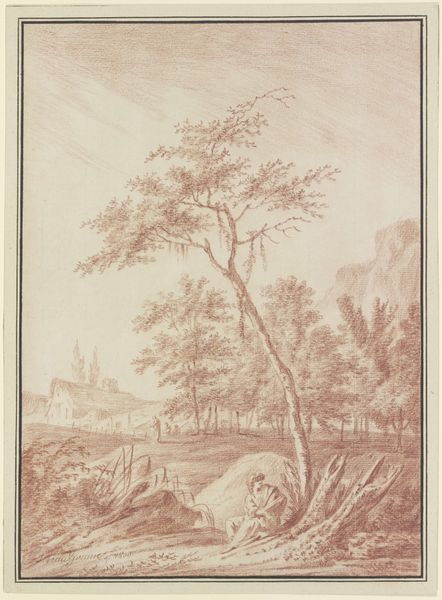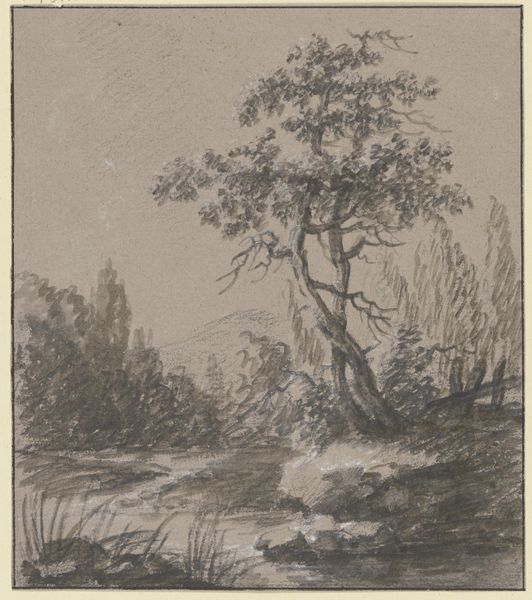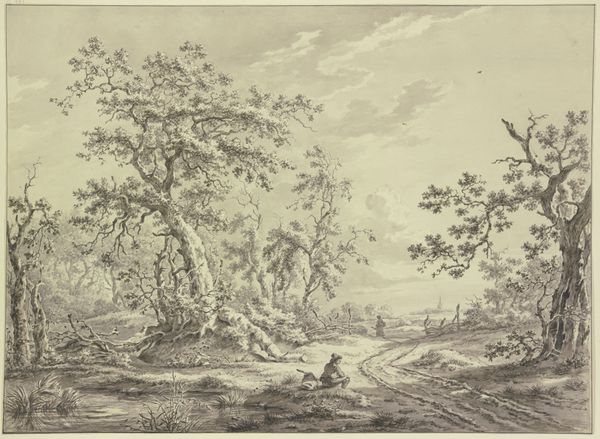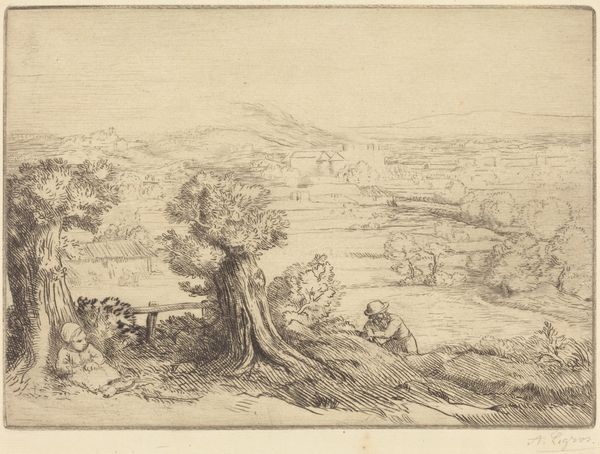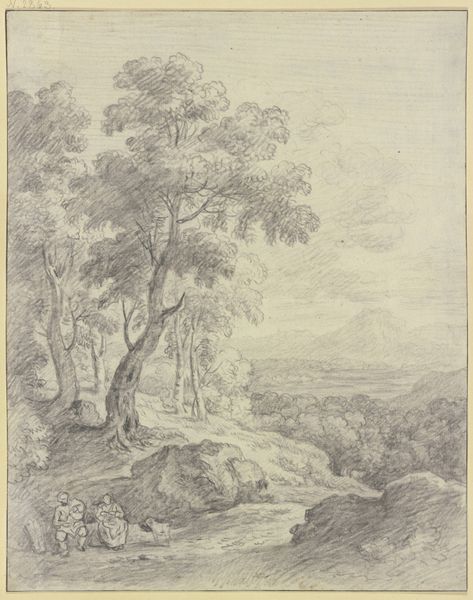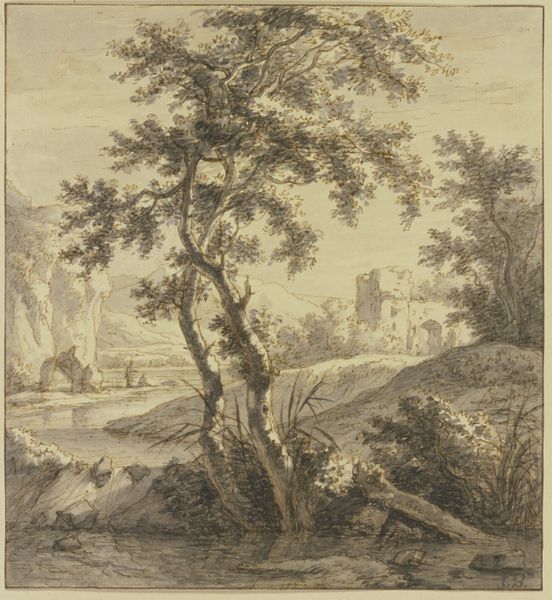
Hirtenknabe mit Rindern, Schafen und Ziegen bei einem dürren und einem abgestorbenen Baum, im Hintergrund Ruinen, ein Turm und eine Kirche
0:00
0:00
drawing, gouache, ink
#
drawing
#
ink drawing
#
gouache
#
landscape
#
ink
#
romanticism
Copyright: Public Domain
Editor: We're looking at a drawing by Adrianus de Visser. It’s called "Hirtenknabe mit Rindern, Schafen und Ziegen bei einem dürren und einem abgestorbenen Baum, im Hintergrund Ruinen, ein Turm und eine Kirche," which Google tells me is “Shepherd boy with cattle, sheep and goats by a barren and a dead tree, with ruins, a tower and a church in the background.” It's done with ink and gouache. I’m struck by how the delicate strokes create a serene but slightly melancholic atmosphere. What stands out to you? Curator: Consider the relationship between labor and material. The artist's selection of ink and gouache, readily available and relatively inexpensive materials, speaks to the accessibility, both in production and consumption, of such imagery for a burgeoning middle class. Look closely; how does the depiction of livestock within this pastoral scene reflect the societal values tied to agrarian life and wealth creation? Editor: That's interesting. So the materials themselves are part of the story. Does that contrast with the sort of decay suggested by the dead tree and ruins? Curator: Precisely! These symbols disrupt an idealized vision. They remind us of labor's ephemerality, mirroring how landscapes—and fortunes—degrade over time. This relates to the commercial cycle the artwork enters when created. How does the artist implicate themselves into this commercial system, in your opinion? Editor: Well, by creating a scene that romanticizes rural life for an urban audience, De Visser's drawing turns an honest living into a consumer product. It's like buying a feeling. Curator: Precisely. This consumption extends beyond the drawing itself, reflecting societal ideals transformed into commodities. So what larger cultural narratives are at play here concerning humans relationship with nature and the material world? Editor: I never really thought about landscapes as products of material and social conditions, but this reframing really deepens my appreciation for what De Visser achieved. Curator: And by recognizing the artist's choices in medium, process, and subject matter, we see beyond a pretty picture into the world of labour and materials which produced it.
Comments
No comments
Be the first to comment and join the conversation on the ultimate creative platform.

